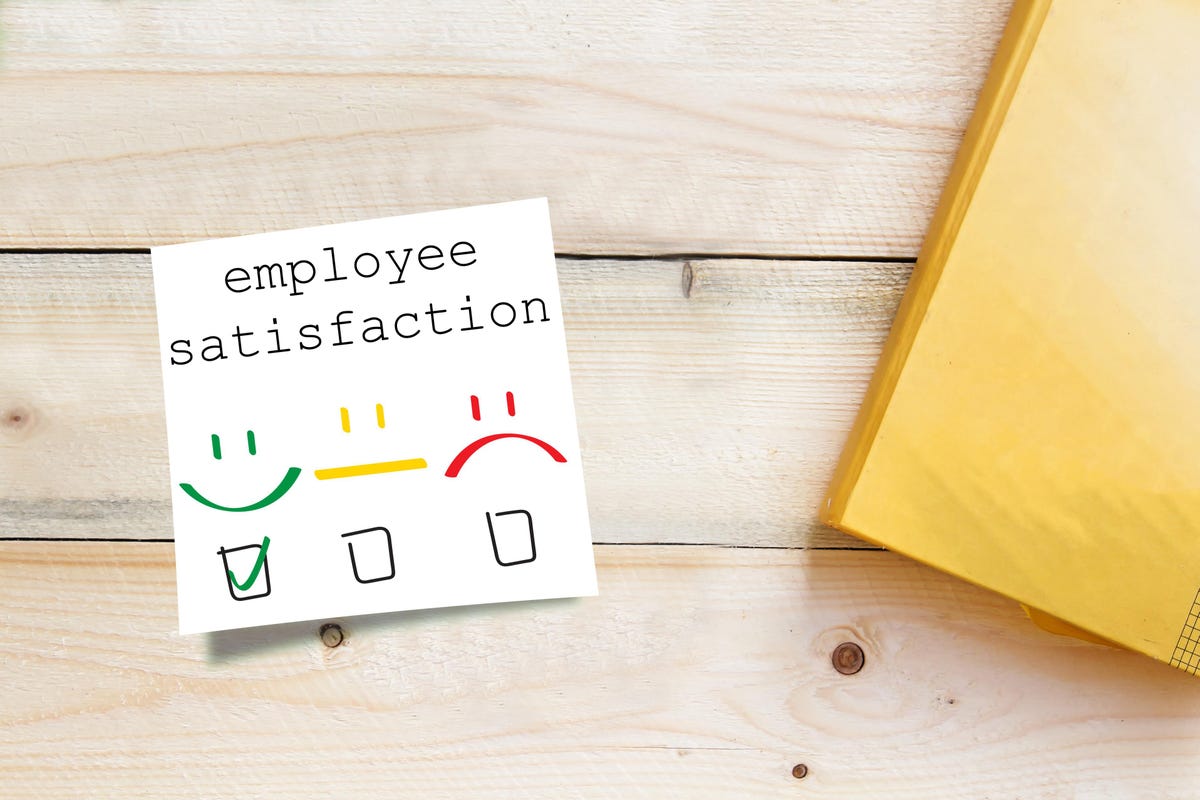
Sign employee satisfaction on a page of notebook
As retailers struggle to bring consumers back into their physical retail locations, hiring challenges may be added to the litany of impediments—Omicron, ecommerce, supply chain issues—contributing to lower footfall numbers than we saw pre-pandemic.
While it was heartening to read that the majority of retailers remained closed on Thanksgiving Day again this year so that their associates could spend time with their families, how did retail workers feel about it? Does this one day off improve sales associates’ morale when faced with the impending crush of the rest of the holiday season? In previous holiday seasons, major retailers hired tens of thousands of temporary sales associates to help offset the frenzy of the season. Today, that scenario is something from a bygone era, with the Great Resignation firmly affecting the retail industry. According to CNBC, retail suffered the second highest number of quits in August—over 720,000—beaten only by the food service and accommodation industry.
The reasons cited by ex-retail employees for quitting are myriad and include long hours, random schedules, inability to take time off, low pay, and difficult customers. The axiom that the customer is always right combined with retail cultures demanding that associates go above and beyond to close the sale have not aged well in today’s world. How will retail management respond to this crisis? They will need to take action—immediately. Bloomberg reports that “the staffing issues are having an impact on [retailer’s] finances. More than two-thirds are struggling to meet sales targets due to labor problems.”
While overall, consumers have said that they want to resume in-store shopping, what are retailers doing to ensure that the consumers who do visit their stores leave happy? Offering the right merchandise at the right price is just one part of the equation. Entire businesses have been built on the correlation between happy employees, higher sales and more loyal consumers, which means that the converse must also be true—unhappy employees lead to lower sales and dissatisfied customers.
We live in an era of diminishing consumer loyalty and increasingly higher costs of customer acquisition. Retailers will need to take action to keep the employees they have satisfied with their jobs so that they can ensure a positive interaction with their in-store customers. The challenge is learning how to do that. The COVID-19 pandemic made people realize that working in unpleasant environments, or with toxic bosses, or in jobs with little to no work/life balance were no longer worth it—at any price. While throwing money at the problem may have been the solution in the past, many employees today are not motivated by the money alone.
MORE FOR YOU
Utilizing experience management tools like employee experience management solutions and Voice of the Customer analytics is one fast and simple way to overcome this challenge and allow retailers to truly understand how to create a better workforce that works for their employees. People join a company because they believe in its mission and its offerings. If money isn’t the answer to the problem, then what is? Wellness Days? More flexible shifts? Bigger product discounts? Gym memberships? Implementing the Voice of Your Employees can really help you get to know and understand your employees, what they value, how they perceive your company and its offerings, and why they – or would not – recommend you to peers. The Voice of Your Employees can help you engage in new offering development in real-time so you can make better decisions, fast. Whatever the answers are, it’s better to invest in your customers and your employees to understand how to improve the working environment in order to grow your business and to deliver the best experience possible.




